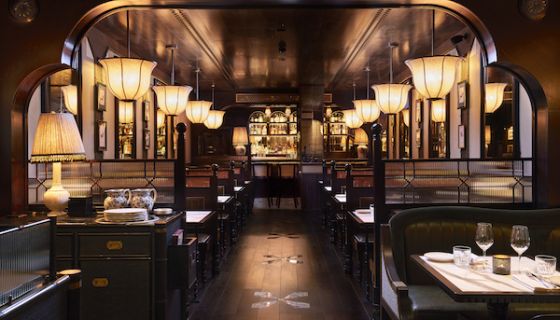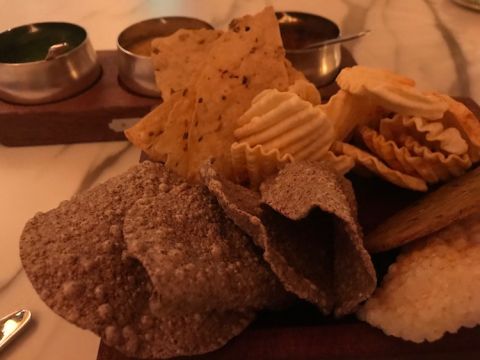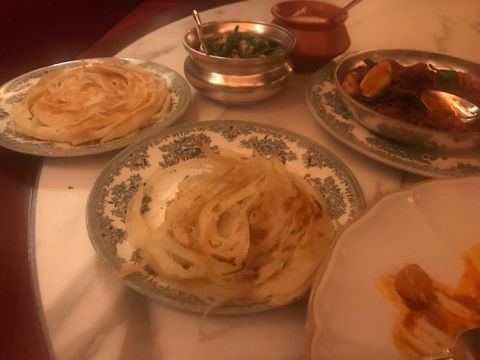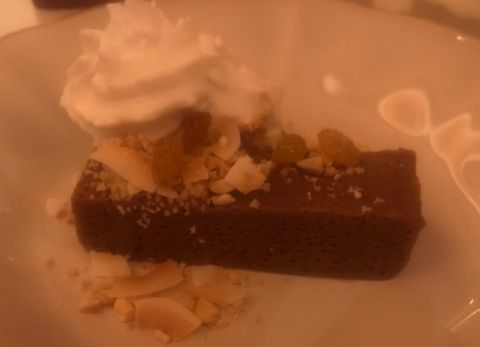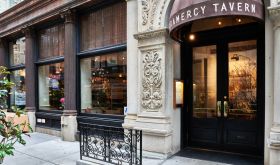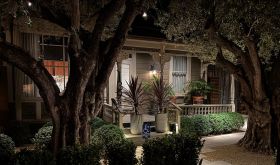In California recently, I found two questions preoccupying my food-conscious friends.
The first addressed the implications of Brexit on our hospitality industry, about which I am deeply concerned. The second question, about the status of their favourite Indian restaurant in London, proved much easier to answer. Gymkhana, the Mayfair establishment whose reputation has circumnavigated the globe, finally reopened its doors on 18 February.
This brought to an end what can best be described as a professional nightmare for the restaurant’s three owners, brothers and sister Jyotin, Karam and Sunaina Sethi, whose initials combine to form the name of their holding company JKS Restaurants, which also owns Trishna, Hoppers, Sabor, Brigadiers, Lyle's and Flor.
Karam was in their office on 6 June last year when he received a phone call from Gymkhana’s head chef. ‘Get down here quickly, the restaurant”s on fire.’
Karam did as instructed although he had to plead with the fire brigade to let him through as the entire block had been cordoned off. He arrived to find himself helpless.
As the smoke cleared, the extent of the damage from a fire that began in the kitchen became clear. ‘The restaurant was not that badly burnt', Karam explained, ‘but it had been subject to heavy smoke and water damage.’
Their immediate preoccupation – what to do with all Gymkhana’s reservations – was made slightly easier by the fact that JKS comprises, like so many others, a small group of different restaurants. Their customers were quickly offered tables elsewhere in the group.
Then there was the question of how to manage Gymkhana’s staff. JKS employs 750 staff across its 15 sites, of whom 75 worked at Gymkhana, generating sales of £5 million per annum. They were just as quickly absorbed into their other restaurants.
My recent meal at Trishna was the best I have ever eaten there and included their popular aloo takri chat, a potato basket filled with vegetables, tamarind and yogurt (£11), followed by an excellent dish of Dorset brown crab whose sweetness was offset by the subtle addition of coconut oil, garlic and curry leaf (£25). Clearly the Gymkhana fire has not dimmed Trishna’s fire.
The most dramatic effect of the fire was on those chefs redeployed to the five branches of Motu, their Indian takeaway service. ‘The cooks who were deputed to work in Motu really noticed the difference between being part of a larger kitchen and suddenly being at the coal face in a much smaller environment where on some evenings they had to face an onslaught of orders. It certainly seemed to sharpen them up', explained Karam, who began his career as head chef at Trishna ten years ago at the age of 26.
The fire prompted the Sethis to make one fundamental but indiscernible change: they decided to take the redesign of Gymkhana in house, setting up a separate design division, rather than working with an independent designer. Little has physically changed within the new Gymkhana, other than it is now open on Sundays.
The ground floor maintains its central corridor past tables of four and five that leads to the bar. To the right of the bar is a (non-functioning) barometer from their grandmother’s house in Delhi that somehow withstood the fire (and is set permanently to rain!).
Down the stairs the biggest design changes are to a semi-circular bar which now can seat four; the wine store that was on the left is now incorporated into a wine service counter on the right. The many sporting scenes from the days of the Raj still adorn the walls, giving the impression that the restaurant has been here for longer than its six years. The kitchen has been improved significantly with a separate section for the pastry chef.
From our corner table, it was possible to see why this restaurant has prospered in a building that was unsuccessful for at least three different operators over the previous decade.
Their cocktail list is impressive and we began with a Himalayan gin and tonic. The wine list is exemplary, the work of Sunaina and her team, and combines the expected – this is Mayfair, after all – with the more unusual, most notably, a broad range of white wines from Switzerland and Portugal.
The large, still annoyingly plastic-coated, menu offers the same broad choice. It is possible to enjoy dishes you can find anywhere such as samosas and buttered chicken here but my advice would be not to. Above is the bread basket.
Instead, we started with an exceptionally hot dish, described as Indo-Chinese halibut (£18), from a recipe based on the Chinese immigrants to Kolkata in the late 19th century. This I would recommend only for the brave.
We followed this with a favourite, kid goat keem (£13), the succulent meat highlighted by the addition of the ghee, garlic and chilli. After this we relished a guinea-fowl dish (£17.50, shown above), more spicy than hot, its spiciness tempered with paratha and raita, and finished with a Sri Lankan dessert, wattalapam, together with a mound of coconut custard (£8).
This was a meal that reinforced an observation I heard from a frequent transatlantic traveller (remember them?) 20 years ago but is still almost as true today: while in the US one should choose Mexican, whereas in the UK one should eat Indian.
Trishna 15–17 Blandford St, London W1U 3DG; tel +44 (0)20 7935 5624
Gymkhana 42 Albemarle Street, London W1S 4JH; tel +44 (0)20 3011 5900

